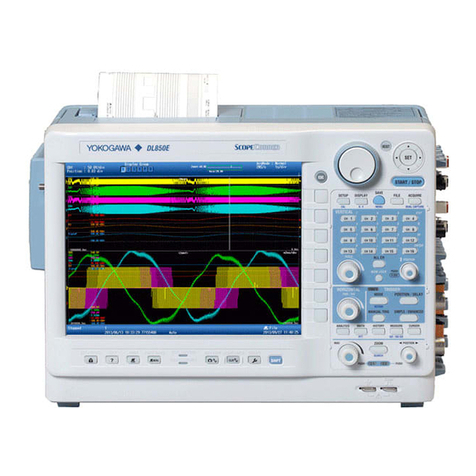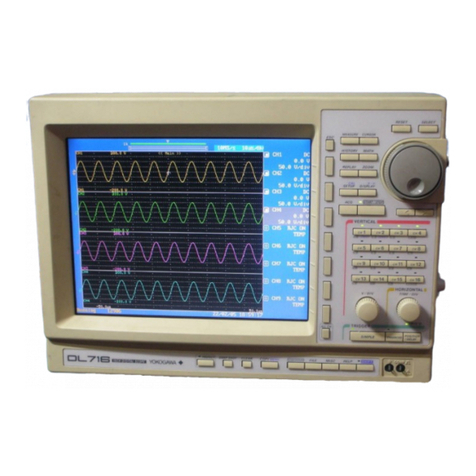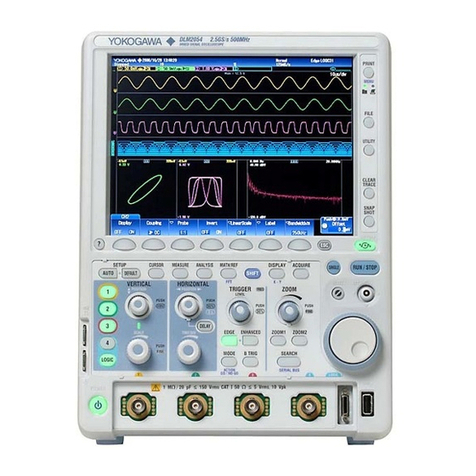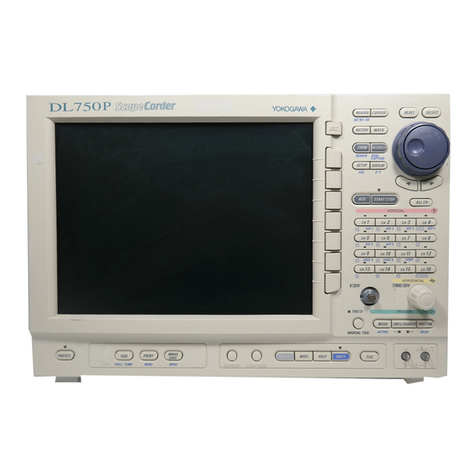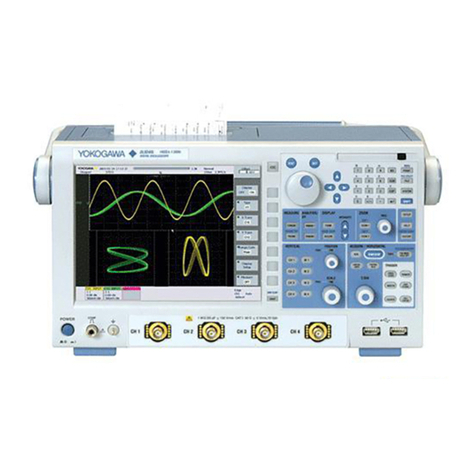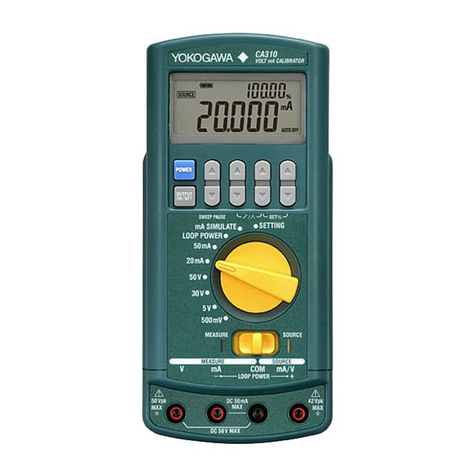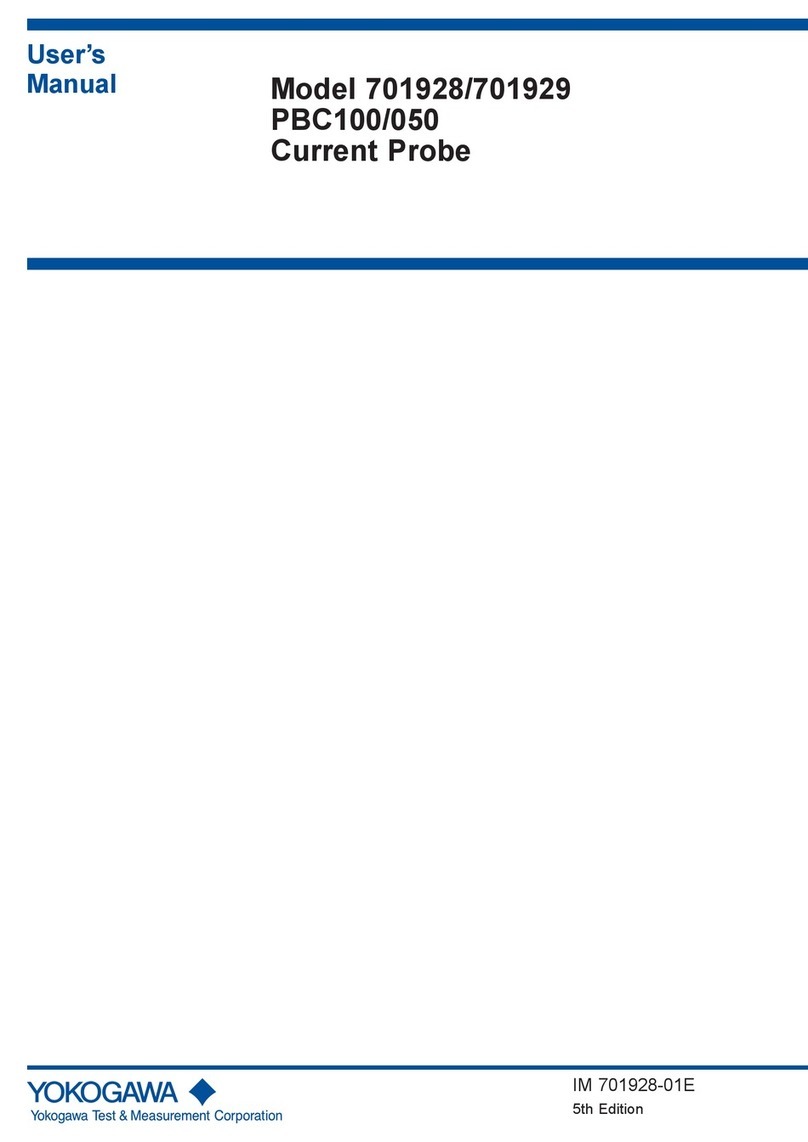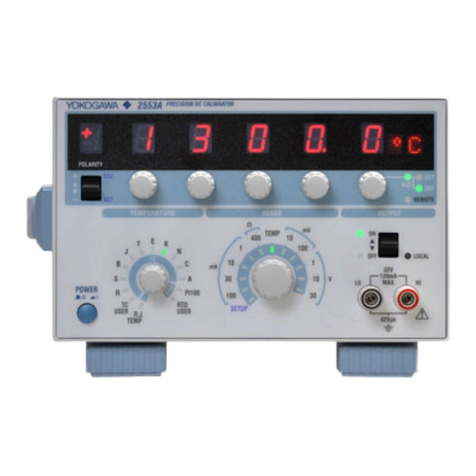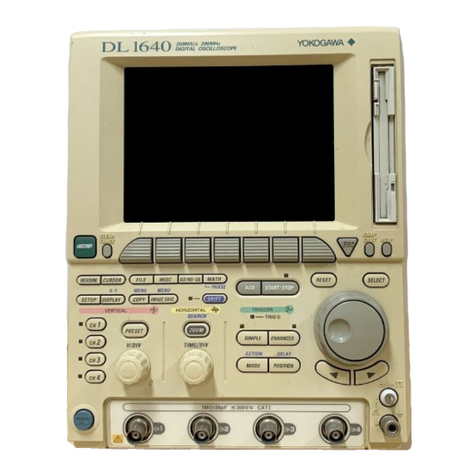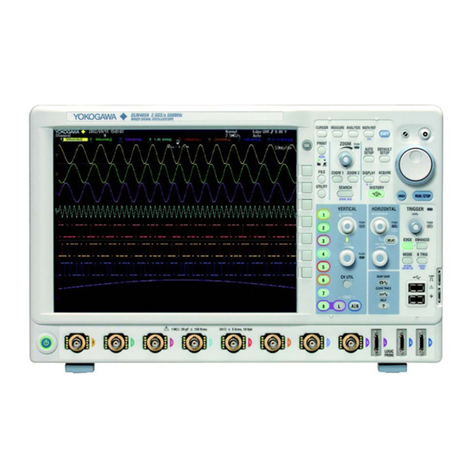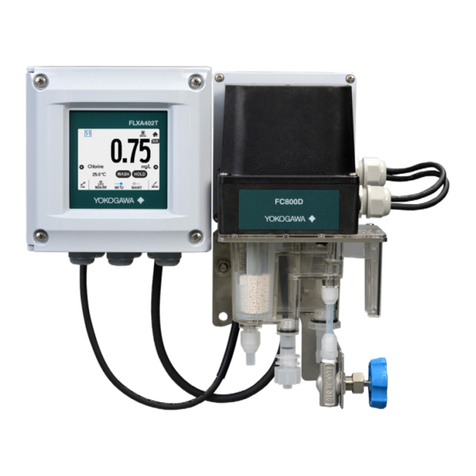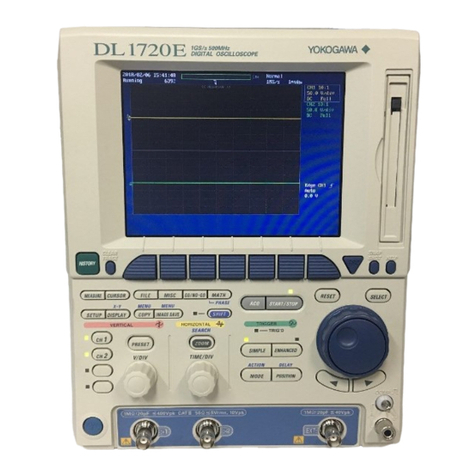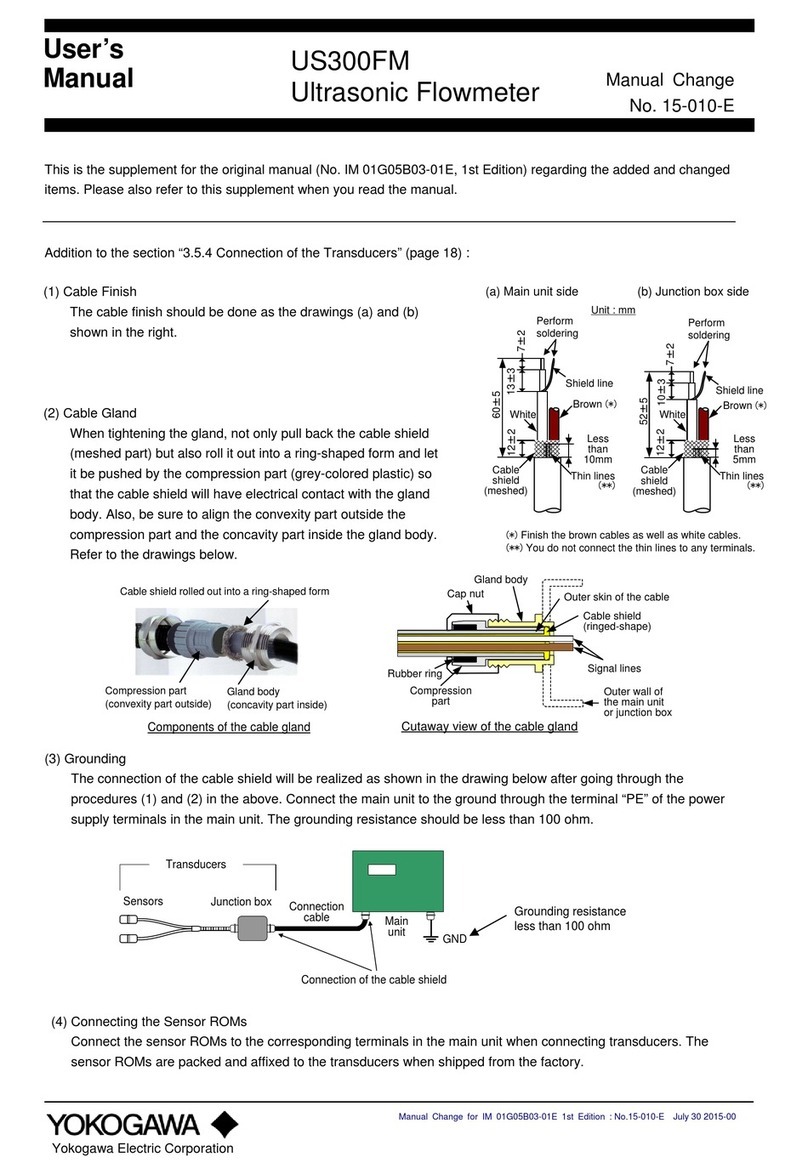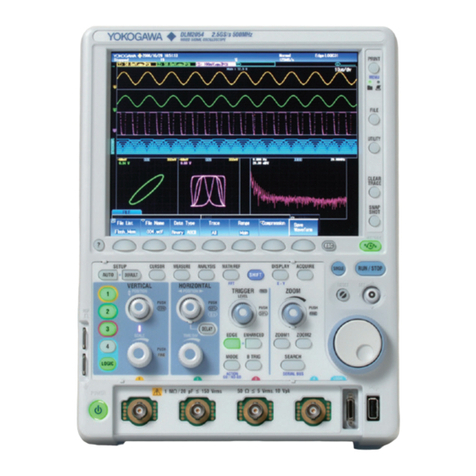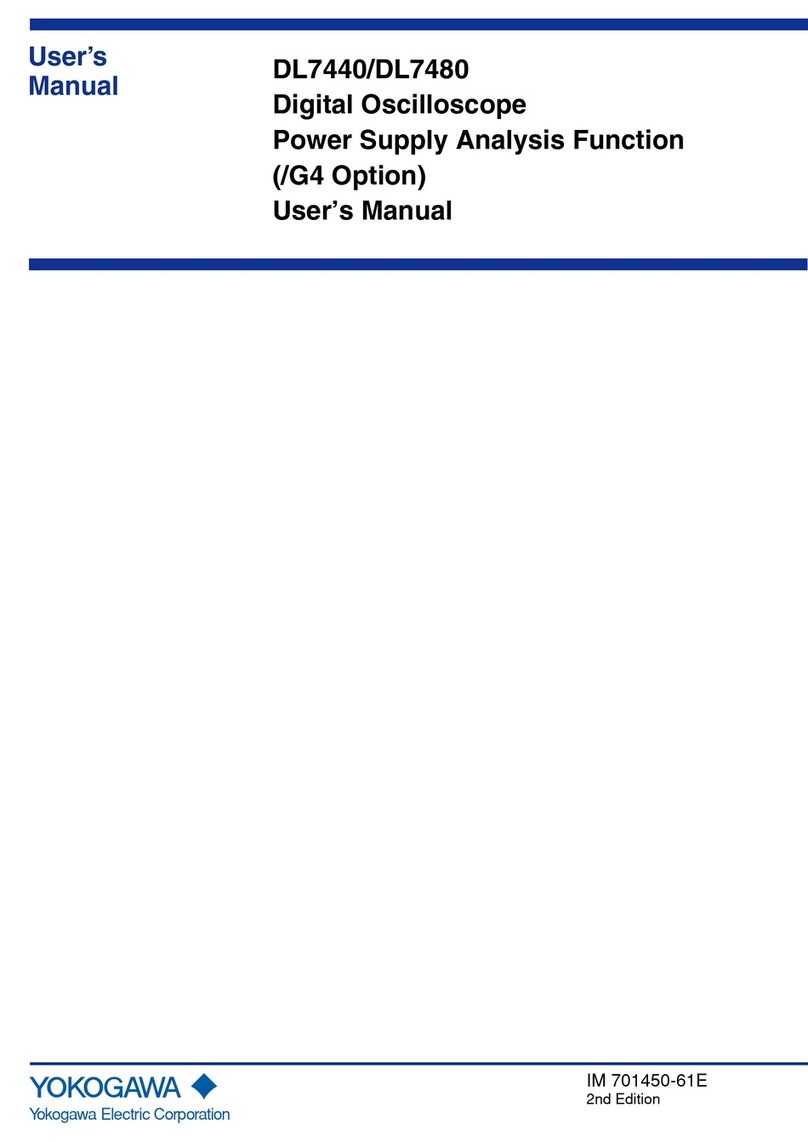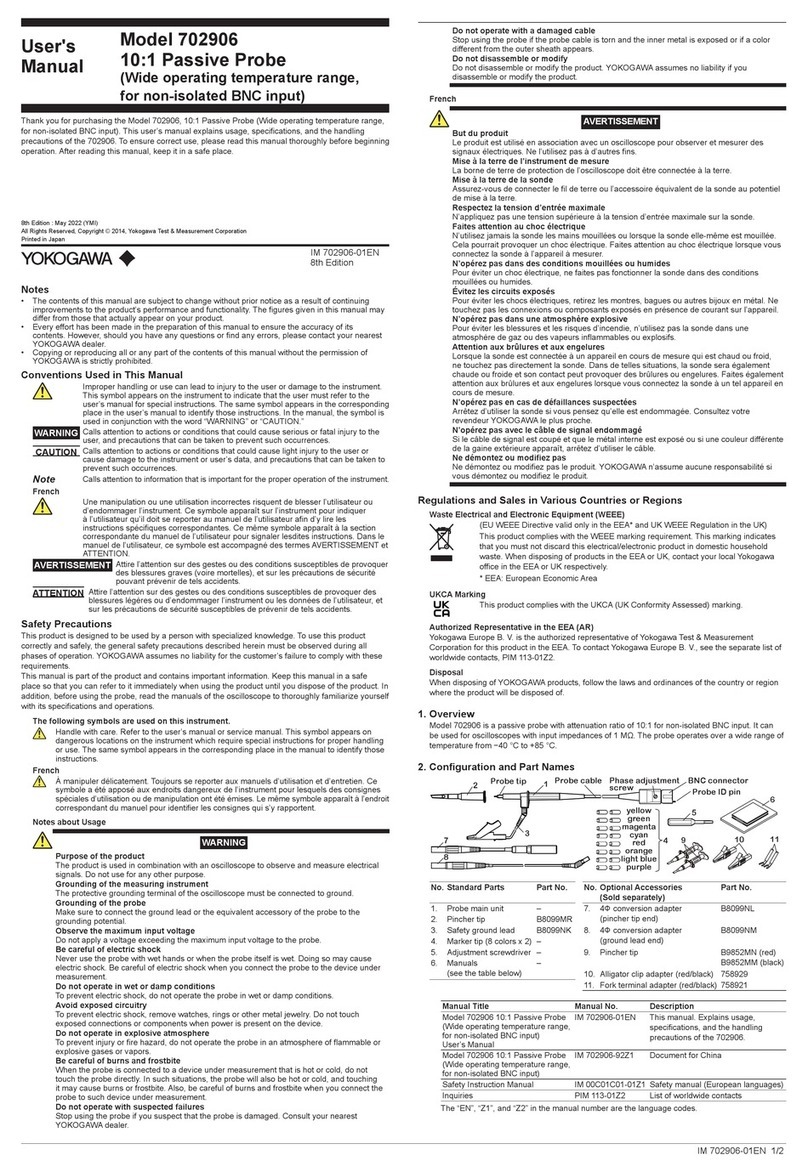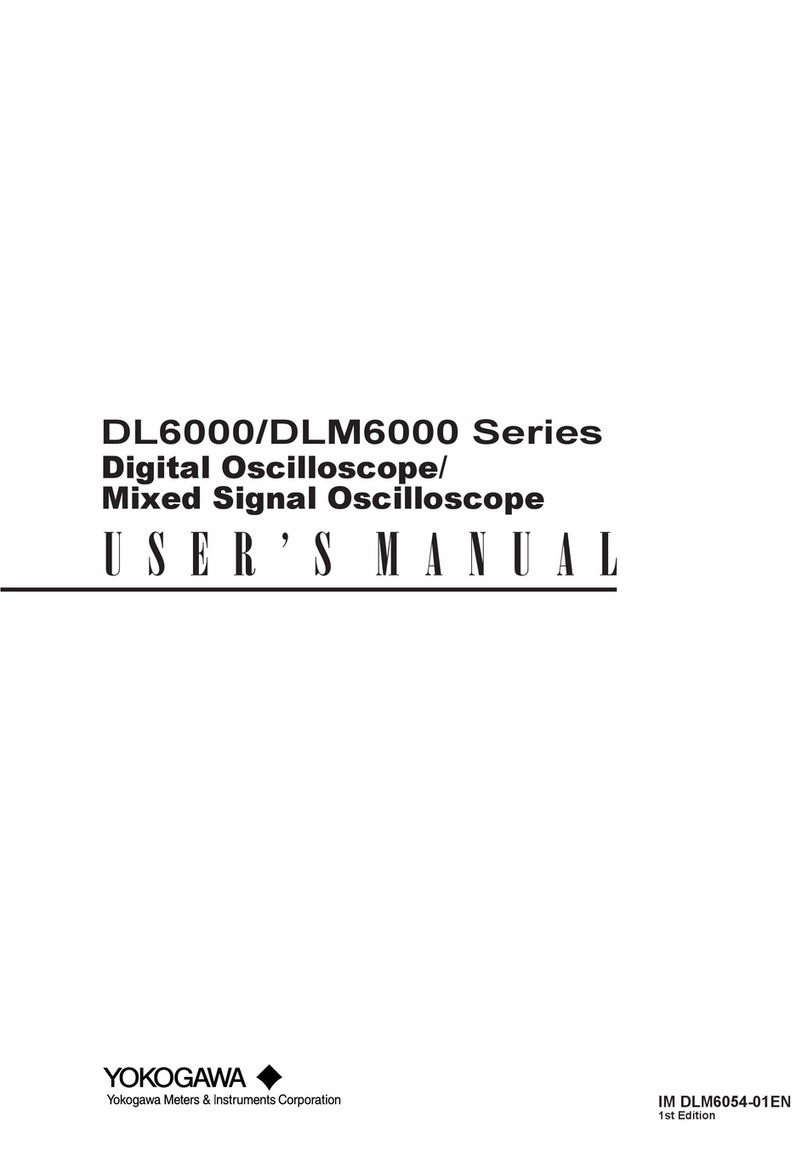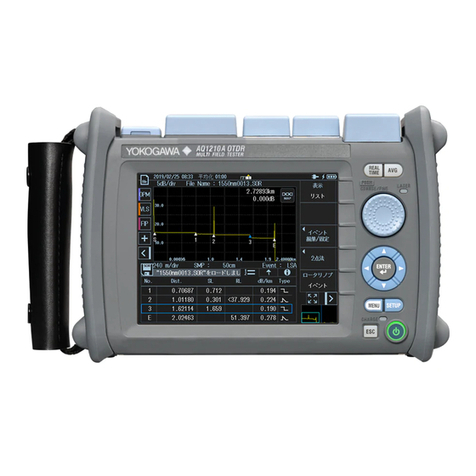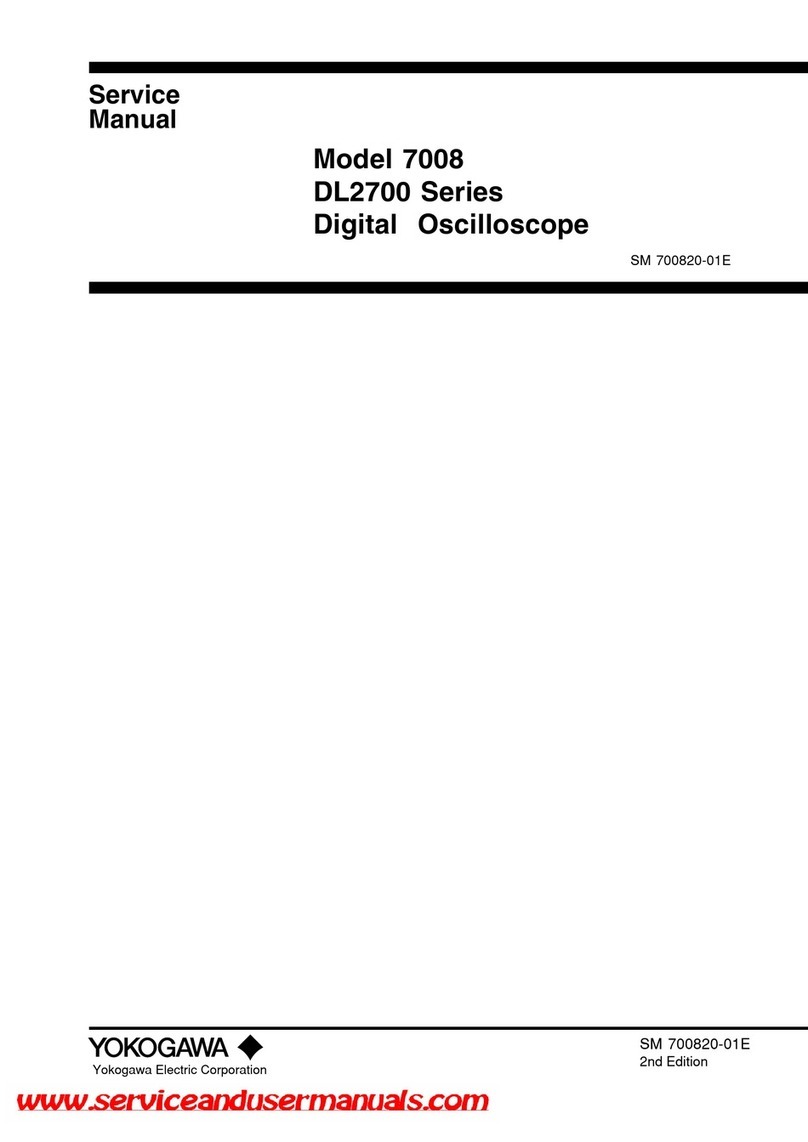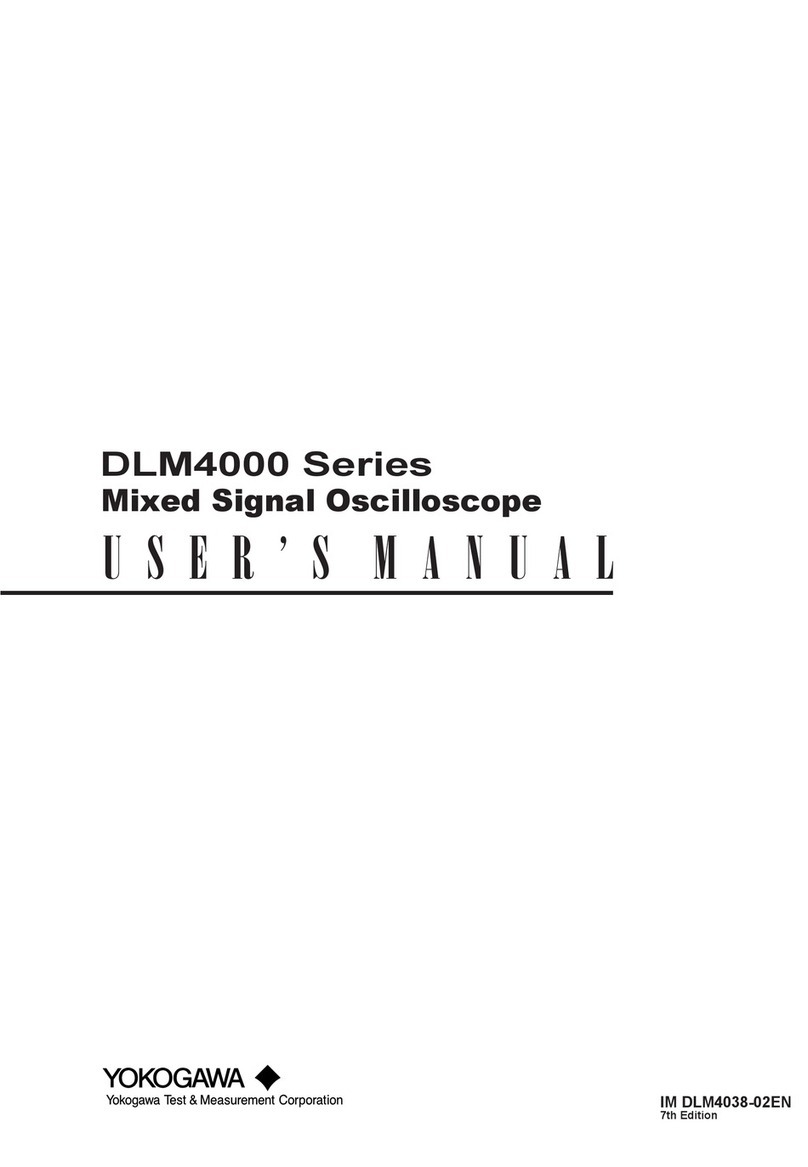
Safety Precautions
■ For safe use, the following symbols are used on the instrument or in this manual:
Danger! Handle with Care.
This symbol indicates that the operator must refer to an explanation in the user’s manual in order to
avoid risk of injury or death of personnel or damage to the tester.
AC Voltage
This symbol indicates the presence of an AC voltage.
WARNING
Indicates a hazard that may result in the loss of life or serious injury of the user unless the described
instruction is abided by.
CAUTION
Indicates a hazard that may result in an injury to the user and/or physical damage to the product or other
equipment unless the described instruction is abided by.
High-voltage Terminal
This symbol indicates a dangerous voltage level (terminals with voltages exceeding 1000 volts must be
so marked). Never touch the terminals.
WARNING
■ To avoid injury, death of personnel, carefully observe and follow the warnings listed below:
1. During the measurement of insulation resistance
• A high voltage is generated in the probe during the measurement of insulation resistance. Do
not touch the measured object, the EARTH or LINE terminals or the GUARD terminal.
2. During the measurement of AC voltage
• There is AC voltage at the GUARD terminal during the measurement of AC voltage. Do not
touch the GUARD terminal.
3. Immediately after the measurement of insulation resistance
• The probes or measured object may remain highly charged. Do not touch them immediately
after measurement.
4. Probe
• Use the probe supplied by Yokogawa Corporation for the instrument concerned.
• Do not use a deteriorated or damaged probe.
• Do not attach/detach the probe to/from the instrument prior to releasing it from the measured object.
5. Protection
• If there are any cracks or other damage in the case because of being dropped or struck, the
instrument may not be safely insulated. Do not use the instrument before any remedial measures
are taken.
6. Object to be measured
• When insulation resistance or resistance is measured, turn off the power to the measured object.
• When theinstrumentisusedin a locationwherean electric currentisflowing,never touch thepowerline.
Use rubber gloves as a safety precaution.
7. Fuse
• To prevent a fire, use the rated fuse to meet the voltage, current and type (Spare Fuse).
• Prior to detaching the cover for replacing the fuse, release the probe from the measured object
and turn off the switch.
• Do not touch the measurement switch during replacement. Otherwise, a high voltage may be produced.
8. Operating Environment
• Do not operate the instrument in a flammable or explosive gas atmosphere.
• Do not operate the instrument, if there is condensation on it.
9. Disassembly
• Do not attempt to disassemble the instrument.
CAUTION
■ To avoid injury of personnel or damage to the instrument, carefully observe and follow
the cautions listed below.
1. Measurement of AC voltage
• Do not apply a voltage over the allowable limits between the terminals.
2. GUARD terminal
• The GUARD terminal is an auxiliary measurement terminal to eliminate a leakage current. Do
not apply a voltage to the terminal.
3. Power supply to the measured object
• Metals and wiring connected to the electric equipment may have a voltage being applied.
Confirm that no voltage is being applied prior to connecting the measurement terminal. The
same precaution applies to the grounding system.
4. Function select switch (except for 240415, 240416)
• Do not change the function select switch setting during measurement.
(Before changing the switch, wait 2 or 3 seconds after a measurement. Immediately after the
measurement, the electric shock charged by probes or measured objects may damage the tester
or the measured objects. This tester has the discharge feature.)
• Do not apply a voltage to the measurement terminals during the measurement of insulation
resistance or continuity test.
1. GENERAL
1.1 Description
Periodically testing of the insulation resistance of electrical machines, power distribution lines,
communication cables and other electric devices, helps to locate faults before they become
serious.
The 2404 Insulation Tester is a hand-driven type insulation resistance tester incorporating a
built-in generator and a constant DC voltage circuit to provide a stable output and give a direct
resistance reading. The insulation resistance is indicated on a moving coil type indicator with a
logarithmic scale. Not only insulation resistance testing and AC voltage measurement, but also
general continuity testing and low resistance measurement are possible using the 500Ωfull
scale low resistance measuring range of the instrument (not on Models 240415, 240416).
The black indicator scale is easy-to-read. This insulation tester is ruggedly built and uses a
shock-and heat-resistant polycarbonate resin case.
1.2 Specifications
Item Specifications
Model
Insulation Resistance
Rated Voltage/Rated
Resistance
Ac Voltage
Measuring
Range
Low Resistance Measuring Range
(continuity test range)
240413 500 V/ 100 MΩ0 to 300V 0 to 500 Ω(central scale mark 50Ω)
240414 500 V/ 1000 MΩ0 to 300 V 0 to 500 Ω(central scale mark 50Ω)
240415 1000 V/ 2000 MΩ0 to 300 V ____(See Note 1)
240416 2000 V/ 5000 MΩ0 to 300 V ____
±5% of indicated value in Effective Measuring Range 1 (See Note 2),
±10% of indicated value in Effective Measuring Range 2 (See Note 2)
Less than 0.7% of scale length at zero and infinity scale marks.
AC Voltage Measurement: ±10%of full scale.
Accuracy: ±10 % of rated voltage at infinity scale mark,
or more than 90 % of rated voltage at center scale mark.
More than 120 rpm.
Polycarbonate resin.
Approx. 184 112 105 mm (7-1 /4 4-3/8 4-1 /8")
Approx. 1.3 kg(2.9 lbs)
User’s Manual
Spare Fuse (2 pcs installed), Carrying Case
Accuracy
Measuring Terminal
Voltage
Rotational Speed of
Crank
Case Material
Dimensions
Weight
Accessories Supplied
at No Extra Cost
• Optional Accessories Available,
Measuring leadwires B9634FA
• Spare Part
Fuse (0.1 A)
Note 1 : The center scalemark is the scale position of
1, 2, 5 or multiples of 10 there of and
corresponds to a value of approximately one-
fiftieth the rated resistance.
Note 2: Effective Measuring Range 1 extends from
1/1000 of the rated resistance to the center
scale mark at 1, 2, 5 or multiples of 10 there
of which most nearly correspond to 1/2 of the
rated resistance.
Effective measuring range 2 extends from
the upper limit of effective measuring range
1 to the rated resistance value. Figure 1-1
IM 2404-10E
1st Edition Jun. 1987
5th Edition Oct. 2007 (KP)
5th Edition : Oct. 2007
All Rights Reserved, Copyright © 1987, Yokogawa M&C Corporation
Thank you for purchasing the YOKOGAWA 2404 Insulation Tester.
To optimize all the functions of the instrument, please read this manual thoroughly before
operating it.
Model: 240413, 240414, 240415, 240416
User’s
Manual Model 2404
Insulation Tester
(Hand-Driven)
